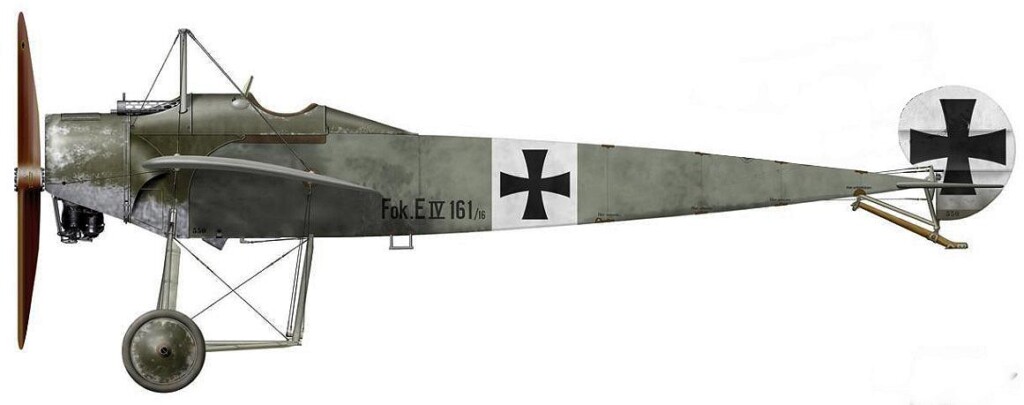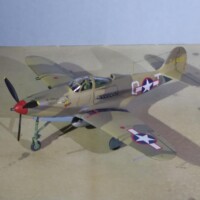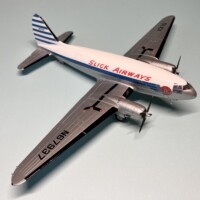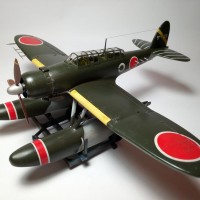1:32nd scale Fokker E.IV
Hi all,
As my Nieuport XVII build is coming to a close, I've started researching the next build.
The Fokker E.IV ‘Eindecker’, Serial No: 161/16 of home defence unit Kest 6, April 1917 at Bonn Hangelar, Cologne.
Flown (i think at least) by Leutnant Hans ‘Garrelt’ Müller.
There were two pilots with the same name.
- Hans Karl Müller was a fighter pilot who scored 9 victories until being wounded in combat on the 26th of December 1916, after which he was withdrawn from operational flying and instead was given test pilot duties for the Siemens-Schuckert company.
- Hans Müller was also a fighter pilot and survived the war and it’s the similarity of the pilot in the following photographs that leads me to believe he is the correct person for this aircraft, given the photograph in the aircraft was taken in April 1917.
However, given the information available, the identity of the actual pilot is my ‘best guess’ and may not be correct.
Hans Müller was born in Etzel, Ostfriesland on the 3rd of July, 1896.
WW1 service:
On the 1st of April 1914 Müller joined the army and served in Infantry Regiment No.13.
He transferred to the German Air Force in November 1916 and flew two-seaters until the end of 1917. During 1917 it seems he may have been serving on the home defence Kest 6, where he was photographed in Fokker E.IV Serial No:161/16.
In late 1917 he joined Jagdstaffel 12 then in early 1918 moved to Jagdstaffel 15 flying the Fokker DR.1 Triplane. On the 9th of January 1918 he scored his first victory and on the 29th he claimed two more victories, although the second was unconfirmed. In March 1918, after shooting down an RE8 for his third confirmed victory, his aircraft was badly damaged over no man's land, but he managed to make it back to his own lines.
He finally moved to Jagdstaffel 18 and it was between the 27th of March and the 22nd of September 1918, that he shot down and destroyed ten more opponents, one of which was possibly Paul Baer, the first American ace of the United States Air Service.
It was between 9:00 and 9:15 AM on 14 September 1918, Müller shot down three SPAD XIII aircraft from the 103rd Aero and at 2.40 that that same afternoon, he shot down a fourth Spad from that same squadron.
A week later, he finished his tally with one last Spad.
It was during this day that Müller scored Jasta 18's 100th victory.
His total victory tally was twelve confirmed and one unconfirmed.
Footnote:
At some point in time, Müller changed his surname to "Garrelt" as the name "Hans Müller" was rather common and he and another pilot with the same name were forever getting their mail
confused.
Post WW1:
During World War II, Müller served on the staff of Lutflotte III under Generalfeldmarschall Sperrle.
Post WW2:
After WW2 he worked in civilian live as an engineer, designing steam locomotives for ‘Hanomag and Henschel’ before going freelance.
Hans Müller died of a brain tumour in Munich in 1964.
Mike







Another great project, Mike. An interesting story, too!
Looking forward to see this being build, Mike @sandbagger
Very interesting history of Hans Müller.
Hi all,
The Oberursel U.III engine is one.
Basically a German copy of the French 'Lambda 14' double row 14 cylinder rotary engine (160hp).
It was essentially two 7 cylinder Oberursel U.0 engines (80hp) bolted together.
I admire the fine detail created by 'Taurus Models' for their resin engine, which I intended to use instead of the kit supplied engine.
However and not for the first time, I found the small parts (soft resin) were easily broken, no-matter how careful I was assembling them.
So I decided to make a hybrid from the 'Taurus Models' engine and the 'Wingnut Wings' engine.
The finer detailed engine crankcase, cylinders and spark plugs are from the 'Taurus' engine.
The valve gear and push rods are from the 'Wingnut Wings' kit.
I think it'll look OK even though the bottom half of the engine is highly visible.
The ignition leads (which of course can barely be seen) are 'EZ' black stretch line (Fine).
Mike
2 attached images. Click to enlarge.
Hi all,
The following are shots of the cockpit side frames, braced with 0.08 mm diameter mono-filament, 0.4 mm blackened tube and 1:48th scale 'Gaspatch' turnbuckles..
Also the rudder, elevator and wing warp controls, similarly rigged and the basic cockpit floor assembly.
Mike
8 attached images. Click to enlarge.
Hi all,
I've replaced the kit supplied machine guns.
Instead I've used the 'Gaspatch' MG 08 equivalent weapons.
This meant a few modifications to both kit supplied and 'Gaspatch' parts.
Mike
2 attached images. Click to enlarge.
Hi all,
The Fokker company burnished or turned the exposed metal surfaces of the 'Eindeckers'.
'Wingnut Wings' suggest representing this effect by brushing with thinned 'Tamiya' Aluminium and Chrome paints.
I think for many modelers this can be problematic, trying to brush paint thin and consistent 'squiggles' over the parts.
Instead I tried an easier and much quicker method, as follows:
Airbrushed with 'Tamiya' Gloss Black (X1).
Airbrushed with 'Alclad' Duraluminium (ALC102).
Airbrushed with 'Alclad' Flat clear coat (ALC314).
'Squiggles' drawn using a standard 2B pencil.
Airbrushed with 'Alclad' Light Sheen clear coat (ALC311).
The final clear coat highlights the graphite in the pencil squiggles.
Of course I then realized that most of this will have to be lightly over-sprayed with the green dope for this particular model - hey-ho.
Mike
2 attached images. Click to enlarge.
Hi all,
The cockpit and top coaming panels now fitted.
As usual, most of the cockpit detail is not visible.
The green paint or dope over the Fokker effect metal panels was oil paint.
'Mig' 3506 Field Green (Oil Brusher) applied then removed using a soft, broad brush with 'Mig' Odourless thinners.
The applied Fokker effect can still be seen through the paint.
More weathering has to be applied so this is just the base covering.
Mike
3 attached images. Click to enlarge.
Hi all,
Engine and cowl assemblies fitted.
Fuselage side fairings and underside deflector fitted.
Now onto the fuselage weathering,
Mike
2 attached images. Click to enlarge.
Hi all,
Fuselage more of less complete now.
'Flory Models' Dart Dirt clay wash and 'Tamiya' Weathering Master Set A and C.
'AK Interactive' Kerosene wash used under the fuselage at the engine.
Decals applied and sealed with 'Alclad' Light Sheen (ALC311).
Now it's onto painting and pre-rigging before building continues,
Mike
3 attached images. Click to enlarge.
Hi all,
The support pylon in front of the cockpit is moulded to scale.
This makes the pylon weak and liable to distortion or breaking if subjected to stress.
In addition, despite the good key supports in the fuselage for the wings, the weight of the wings does impart a downward leverage (anhedral).
Therefore, as with my E.1 model, I chose to replace the pylon and its cable pulley.
The cable pulley was cut from three 2.5 mm diameter and two 1.75 mm diameter discs of 0.2 mm thick plastic card.
The pylon was made from 1.0 mm and 0.6 mm Brass tube with 0.4 mm diameter Brass rod, on which are two 'Gaspatch' 1:32nd scale Type C turnbuckles.
The parts were soft soldered together and the cable pulley secured onto the 0.5 mm rod.
A holes of 0.2 mm diameter was drilled through the flattened front tube to allow rigging lines to be attached,
Mike
1 attached image. Click to enlarge.
Hi all,
The rest of the parts have now been painted and decals added.
'Flory Models' Dark Dirt clay wash used for weathering/stain.
Over sprayed with 'Alclad' Light Sheen (ALC311) to seal the finish.
Now onto pre-rigging before final assembly,
Mike
2 attached images. Click to enlarge.
Hi all,
Getting close to the finish now,
Rigging completed using 0.08 and 0.12 mm diameter mono-filament with 0.4 and 0.5 mm diameter blackened Brass tubes.
'Gaspatch' 1:48th/1:32nd and 'Proper Plane' 1:32nd scale turnbuckles.
Just the gun sights, windscreen, foot steps and propeller to fit.
Also the display case and figure,
Mike
3 attached images. Click to enlarge.
Hi all,
The Fokker E.IV ‘Eindecker’, Serial No: 161/16 of home defence unit Kest 6, April 1917 at Bonn Hangelar, Cologne. Flown) by Leutnant Hans ‘Garrelt’ Müller.
As usual a fully detailed build log in Adobe PDF format, can be downloaded from the 'Logs' page on my site:
https://mikesww1aircraftmodels.com/
Thanks for your support and comments during this build,
Mike
11 attached images. Click to enlarge.